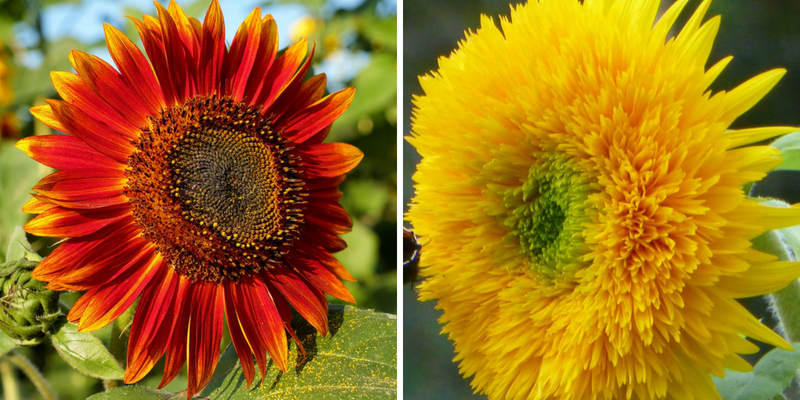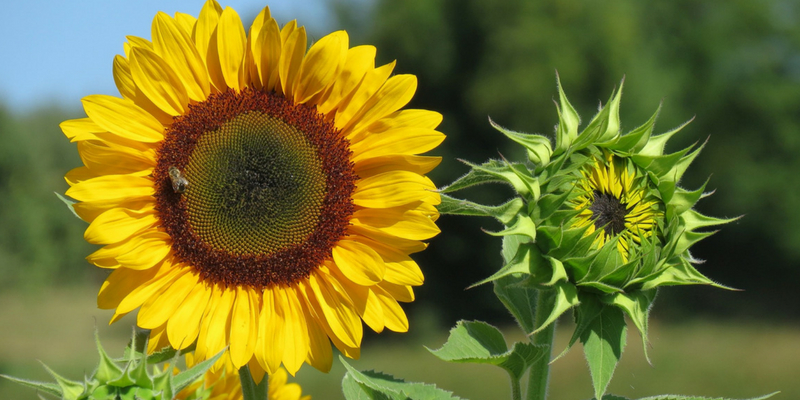It’s August! As you walk around your neighborhood, watch out for sunflowers in gardens, or you might spy them in bouquets at the local farmer’s market. Stop and take a minute to appreciate the sunflowers you see, because they’re an American treasure.
Most of us know what a sunflower looks like, and you can probably picture one in your mind’s eye right now. The flower you’re imagining is probably a yellow sunflower, which is a type of plant that lasts one year and is replanted each spring. These types of sunflowers can also be brown-red colors or have unusual petals. There are also sunflowers that come back year after year without replanting. These are called perennial sunflowers.

What you might not know is that there are 62 species of sunflowers; the one above that most of us think of is just one of them. The common sunflower’s scientific name is Helianthus annuus.
Something all sunflowers have in common is they are from the New World. Nearly all sunflowers are from North America, about 95%, with the remaining three species being from South America.
Another notable species of sunflowers is the giant whorled sunflower ( Helianthus verticillatus). This sunflower was believed to be extinct until 1994, when plants were rediscovered in Georgia. Since then, research scientists located a small handful of other populations, and they determined the worldwide total was between 300-400 plants. Giant whorled sunflowers have been listed as a Federal Endangered Species since 2014. Conservationists are working on stabilizing the populations and increasing the number of plants.
An important lesson in the story of giant whorled sunflower is to learn what plants are native to where you live. The major threats to this plant are land development, mowing, draining wetland habitats and applying herbicides. If you know which plants and animals are in your yard or neighborhood, then they won’t be removed accidentally.
Tamawi’s Tip: If you live in Tennessee, Georgia or Alabama, you may be able find and grow this native plant. It grows in wet prairie conditions.

You might not be able to visit and see the giant whorled sunflower, but let us know what colors and types of sunflowers you find in your community in the comments below. You can also share a picture on Facebook at Cultivating Curiousities or tag me on Instagram @CultivatingCuriousities.

